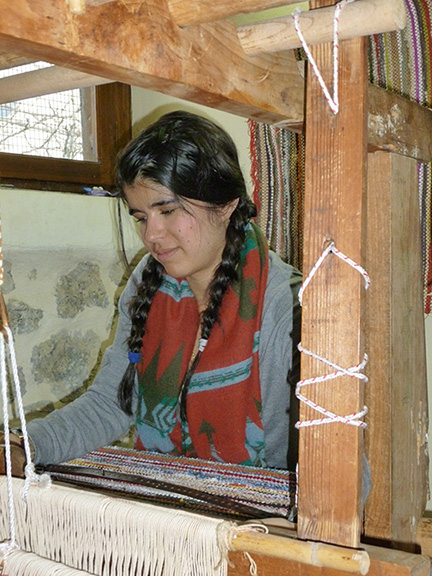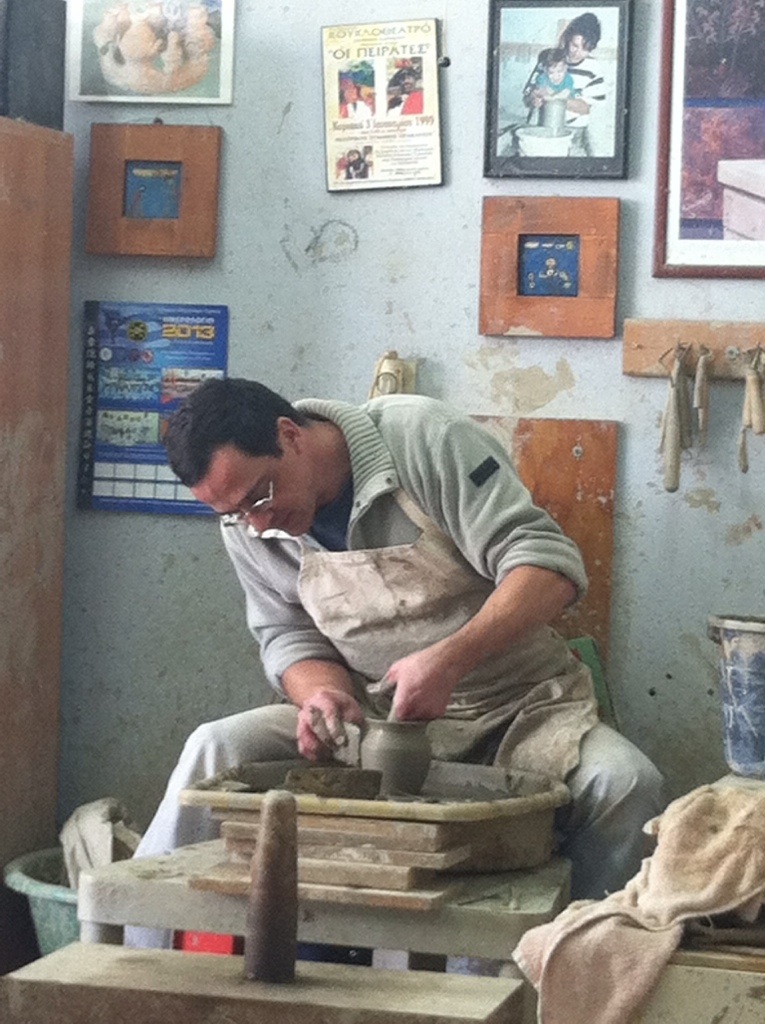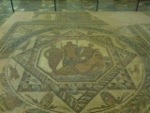This trip we have not only been learning about ancient Greece and its inhabitants but also about the experience of modern Crete and the interactions of the island’s people with their rich history. We visited a weaving workshop in Zaros and met with Kyria Maria, who crafts her own designs, ones inspired both by ancient and modern motifs.
We also met with a potter who emulates the ancient pottery techniques but also creates his own modern designs.
These designs and themes remain similar across time, with the meander and rolling waves patterns, the octopus and dolphin images. Even the theme of the flora and vegetation of the island remain common embellishments like they do in Minoan wall frescos and pottery. There is a entire industry that thrives on producing replicas of famous archeological finds and I wonder how many of these artistic tropes and themes are a product of Greece capitalizing on what tourists expect to see and be able to purchase for their own mementos and how much of it remains in the artistic canon because of pride in their heritage. We have asked numerous people whether they consider themselves Cretan or Greek, and many responded that they are a Cretan first and a Greek second. This immense pride is evident in everything they do from creating textiles to producing olive oil and I’m sure that many of these artistic choices are deliberate in order to keep the Cretan spirit alive. Even with a history of 800 years of continuous occupation, the language, culture, and art of Crete has thrived and remains a core part of their identity today.
As an Art History and Classics double major, it’s extremely easy to only focus on the ancient side of things and forget that life continued beyond the second century A.D. This trip is not only about visiting as many archeological sites as possible but about experiencing the lives of the modern Cretans.






